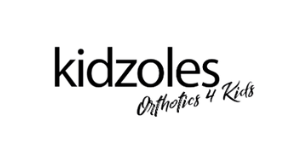How your Child’s Posture Develops and the role their feet play…
Have you ever caught yourself asking your child to “Pop your shoulders back” or “Stand up straight”? All Parents are aware, at some level, the importance of posture and the development of their own child’s body position. What If I told you that your child’s foot position can have a huge impact on the lasting position of their posture….
Actually, its between the years of birth to around 8 years of age that a lot of the controls and positions of your child’s body posture will develop. During these first 8 years of life the brain begins to log neural and muscle data sent from our child’s nervous system. The development of muscle sequence, meaning how the muscles of the body contract and relax around anatomy position is all sent via your child’s neural pathways to the brain.
So you can imagine that if those signals are sent to the brain from muscles functioning around poor postural position that is not a great outcome for overall postural strength.
The main two ways our bodies control changes in posture and movement through our body is via our feedforward mechanism and our anticipatory mechanism. These both develop with age and the feedforward mechanism becomes particularly important in your child’s ability to control and adapt to postural changes. The development of the feedforward mechanism around your child’s postural position will control what muscles they use, and the capacity of those muscles to aid movement.
What does this all mean?
If Anatomical posture is poor, the muscles that work around the joints to support movement will send signals to the brain to log that data. Primary muscles are the main stronger muscles for body movement. Where poor posture is evident the secondary muscles can take over some of their function, making primary muscles weaker. Therefore less effective at absorbing load and more at risk to injury under excessive loads in sport such as running and jumping.
Where foot position comes in..
All Humans load from the foot up. You included. If the position of the foot and the mechanics of how it absorbs load is unstable, this carries up into the kinetic chain of the rest of the body.
Take a child with a Hypermobile Flat foot for example. Hypermobility is when the ligaments between the bones are super stretchy and lax. The foot of a hypermobile child can appear quite flat under functional load. Further change will occur in joint movement above the foot and ankle and we can commonly see the leg and hip drift inward and internally as your hypermobile child walks. When this happens the pelvic positions alters and moves forward which will weaken the need for core tummy muscles to engage and make balance less stable. Where there is pain associated in muscle soreness, or instability in tripping, there is need to intervene.
Changing the foot posture, by limiting the ability of those joints in a hypermobile child to head to end range of motion will begin to condition muscle feedback. Orthotic’s act to change walking load by creating different pivot points for the muscles of the foot and ankle to load against. By changing how the foot and ankle move against an orthotic and therefore the ground, including an orthotic will also create change in load of muscles acting around the joints above the ankle in the rest of the body.
Other conditions which can create postural change are hypertonia (tight muscles) and anatomical boney position (genetic bone shape).
Orthotics are one tool in our tool box to help with Postural alignment. Specific exercises designed to improve strength and stretching of muscles are crucial to postural alignment and long term strength. Using them all together, where poor posture is evident, is the best way to create change.
